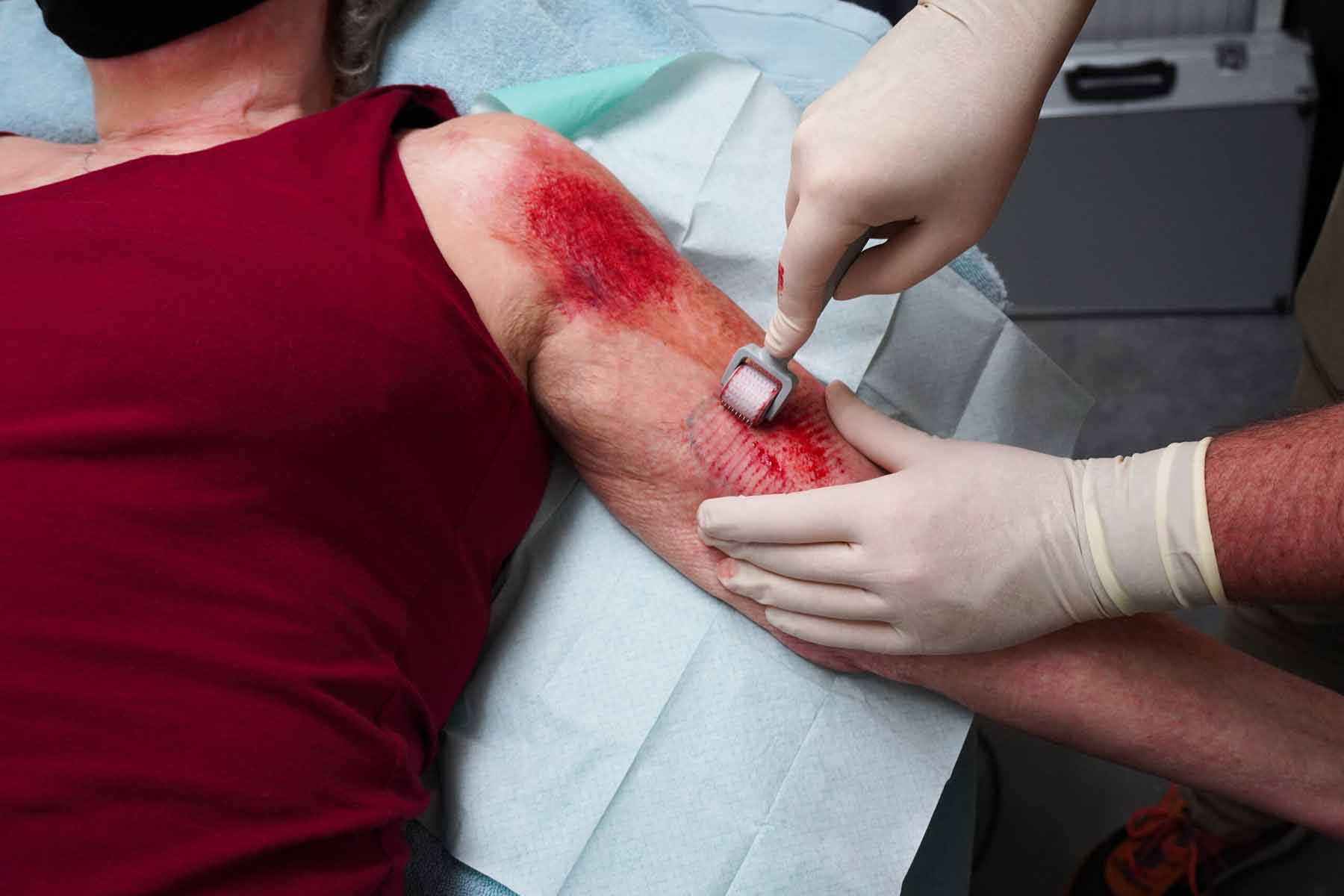Micro-Needling
The Why & How of Micro-Needling
Micro-needling is a semi-invasive technique that can be used on the face and body to achieve collagen induction (production). In this technique the skin or scar is pricked with needles to cause percutaneous collagen induction, this builds up connective tissue underneath retracted (contracted/stuck) or hypertrophic scars and wrinkles.
Microneedling can be done with a drum-shaped roller of 192 needles or with a stamp-like pen consisting of 5 – 17 needles. The pens are like a tattoo-gun, but in this case no pigment (ink) is used.
Medical rollers have a needle length of between 1.5 and 3mm and they are not suitable for home use; treatment must be given by a trained medical practitioner. The device is rolled several times lengthwise, crosswise, and diagonally over the scar with increasing pressure. The scar should be needled as densely as possible with a constant pressure, without overaggressive needling as this can cause even worse scarring.
The needles penetrate the dermis causing thousands of dermal micro-wounds that result in a superficial inflammation. The needles do pass through the epidermis but do not damage or remove it. The epidermis is only punctured and therefore it can heal completely and rapidly. Following the treatment, the scar bleeds for a short time, but stops after a few hours. The treatment of a 10cm²-zone takes about 5 to 10 minutes.
Treatment care
Before needling topical, local or general anaesthesia is applied to the scar, depending on the surface and the thickness of the scar.
Micro-needling is a sterile procedure, so appropriate care is taken to preserve a sterile field.
Rolling backward and forward in different directions creates an even distribution of the perforations (holes). The treated scar looks purple. For scars with an uneven texture the needling pen may be easier to use. Micro-needling can be combined with transdermal drug delivery (e.g., with stem cells or vitamin A, which is infused into the skin/scar immediately after the treatment).
At the end of treatment a transparent film dressing is applied for up to 72 hours. After this the blood residue is washed off and the skin/scar is hydrated or moisturised 3-4 times a day after the wound is fully healed. The swelling usually disappears at 48 hours and the discolouration within 5 days.
F.A.Q.



